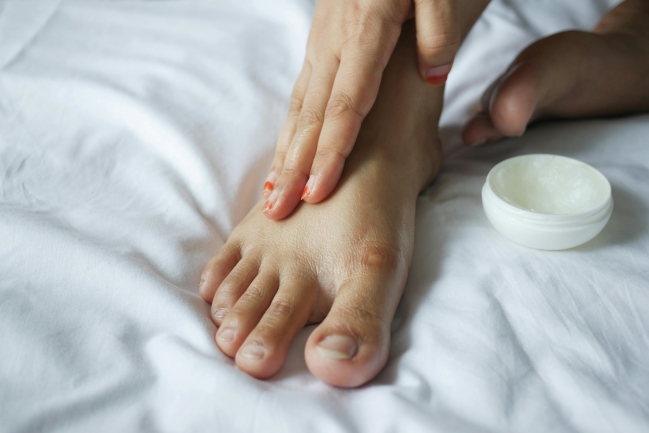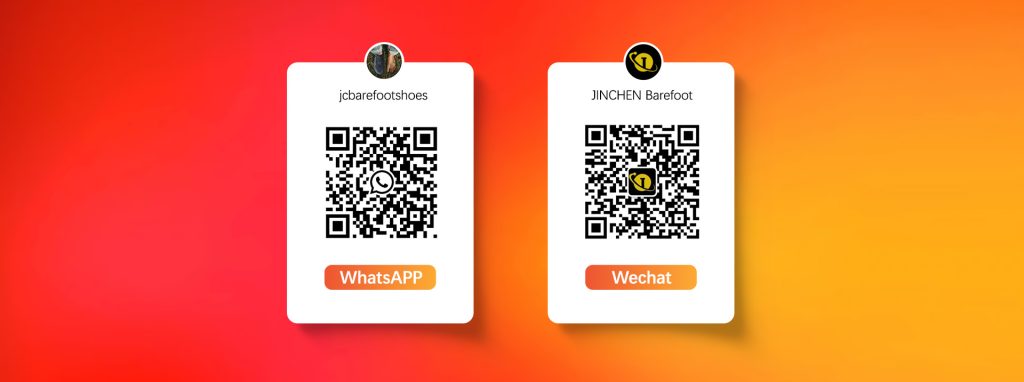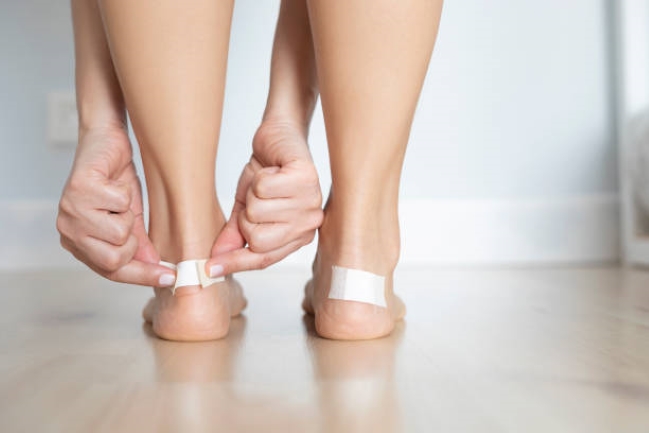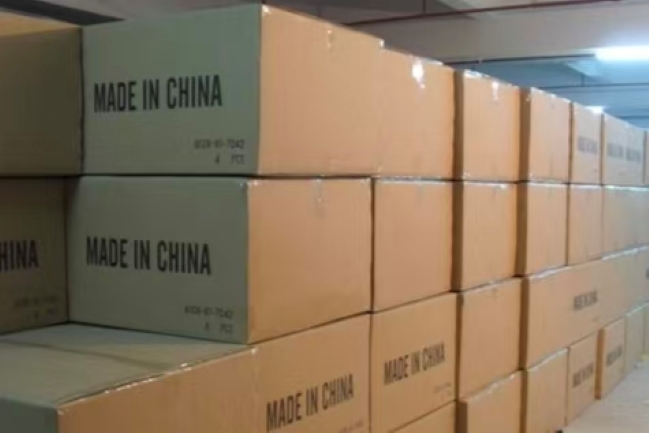Today, with barefoot shoes being popular, more and more people are trying to wear shoes directly “barefoot” without socks, enjoying the realistic and free feeling of the soles of their feet touching the ground.
However, many beginners encounter a common problem at the beginning: wearing shoes barefoot can easily cause blisters and even lead to pain in the toes or heels.
Does this mean that barefoot shoes are not suitable for wearing barefoot? In fact, it’s not.
The original design intention of true barefoot shoes is to make the feet as natural and free as possible. However, if the way of wearing or transitioning is inappropriate, it is easy to have the problem of “rubbing the feet”.
Today, based on our practical experience, we have summarized six anti-abrasion techniques for you, helping you enjoy the comfort of barefoot shoes while avoiding the embarrassment of chafing the skin.
Why Does Going Barefoot in Barefoot Shoes Cause Blisters?
Before sharing tips, let’s first understand the reasons:
The skin’s adaptability is insufficient
Many people wear thick-soled shoes and socks for a long time, and their foot skin is relatively delicate. When it comes into direct contact with the shoe surface, it is easy to get injured due to friction.
The running-in period of new shoes
Even for genuine barefoot shoes, the new upper still has a certain degree of hardness when used for the first time, and the friction points at the shoe opening and toes may cause the leather to break.
Humidity factor
Feet tend to sweat easily, and the moist skin increases the coefficient of friction, making them more prone to wear and tear.
The shoe shape doesn’t fit
Fake barefoot shoes (with narrow toes and rough linings) are particularly prone to rubbing against the toe joints or the instep.
🔑 Summary: Barefoot shoes themselves do not equal “abrasive shoes”. The problem often lies in the foot ‘s adaptability + the details of the shoes + the way they are worn.
6 Effective Anti-Friction Techniques for Barefoot Shoes
Tip 1: Gradually adapt and don’t rush to wear it for a long time
Many beginners wear their clothes barefoot all day long at the very beginning, which is the easiest way to burn their skin.
✅ Suggestions:
Week 1: Wear the shoes for 1 to 2 hours every day to allow your skin to gradually adapt to the upper.
Week 2: Gradually extend to 3-4 hours.
Week 3: It can basically be worn throughout the day.
📌 Actual test experience: With such a transition, the skin on the soles of the feet will gradually thicken and become more wear-resistant, and the friction points will naturally decrease.
Tip2: Protect key areas in advance
The heel, the joint of the thumb and the little toe are the areas that are most prone to chafing.
✅ Protection measures:
Apply anti-abrasion tape/sports tape to the heel and the outer side of the little toe in advance.
Transparent liquid anti-abrasion cream forms a protective film on the skin surface.
📌 Actual test experience: particularly effective during long walks, significantly reduces blisters.
Tip 3: Keep your feet dry
Wet feet are most likely to develop blisters.
✅ Protection measures:
Sprinkle a little talcum powder or foot-specific anti-friction powder on the soles of your feet and between your toes.
If it’s summer, choose barefoot shoes with excellent breathability (made of real mesh or perforated genuine leather).
📌 Actual test experience: The powder can delay the increase of the friction coefficient after sweating, making it very suitable for sports or hot weather.
Tip 4: The inner lining of the shoes should be “truly comfortable”
Many so-called “barefoot shoes” are actually rough inside, with the stitching at the shoe opening exposed directly, which can easily scratch the feet.
✅ Purchase suggestions:
There should be no hard seams inside. It is best if it is woven in one piece or seamlessly connected.
The opening of the shoe should be soft and not pinch the ankle or rub the top of the foot.
The genuine barefoot shoes have a spacious toe box to prevent the little toes from being squeezed and rubbed.
📌 Actual test experience: The difference in “anti-abrasion performance” between real barefoot shoes and fake barefoot shoes is very obvious.
Tip 5: Gradually train the skin on your feet
Just as running requires endurance, wearing shoes barefoot also needs training.
✅ Methods:
Walk barefoot for a few minutes at home every day (on the floor or grass).
Gradually increase the time spent walking barefoot to make the skin thicker.
📌 Actual test experience: After persisting for a period of time, the skin on the soles and toes of the feet is significantly more wear-resistant, and the friction when wearing shoes barefoot is no longer so sensitive.
Tip 6: Proper cleaning and maintenance of barefoot shoes
If there is dust or hard particles inside the shoes, the friction will increase significantly.
✅ Suggestions:
After each wear, promptly pat or rinse the inside of the shoes to prevent dust and sand from remaining.
Wash the insoles by hand regularly to keep the inside of the shoes clean.
Leather shoes can be coated with special care oil to make the inner lining softer.
📌 Actual test feeling: Keeping the inside of the shoes clean, the friction points of the toes are significantly reduced.
Real-Life User Cases
To make the methods more relatable to daily life, we have compiled the real experiences of several users from Europe and America:
Danish user Lars: Walks more than 25,000 steps every day. At first, he had severe blisters on his bare feet. Later, he tried anti-blisters and antiperspirant powder, and successfully kept his feet uninjured during long walks.
German fitness coach Anna: She usually wears barefoot shoes in the office and goes straight to the park for a walk after work. She shared her experience: First, wear five-finger socks for a two-week transition, and then try going barefoot. The skin ADAPTS faster.
Travel blogger Nina (Italy) : While hiking in many European countries, she often used anti-blisters and five-finger socks. She walked over 15 kilometers a day for a week and didn’t develop large blisters.
Kevin, an Irish office worker: He enjoys commuting barefoot on a daily basis. He would sprinkle a small amount of talcum powder in his shoes to keep them dry and prevent blisters on the heels.
A user of the German Reddit community said: “I walked 10,000 steps barefoot every day for three weeks and almost stopped rubbing my feet.” His experience is to proceed step by step and clean the inside of the shoes regularly.
These experiences show that by finding a method that suits you, you can feel comfortable and worry-free even when wearing barefoot shoes.
Anti-Friction Experience Comparison Table
| User | Scenario | Main Issue | Solution | Result |
| Lars (Denmark) | Long-distance walking 25,000 steps | Blisters on soles | Anti-friction patches + Foot powder | Successfully completed hiking |
| Anna (Germany) | Office + Hiking | Heel friction | Toe socks for transition | No significant rubbing after 2 weeks |
| Nina (Italy) | Europe travel | Long-distance friction | Anti-friction balm + Toe socks | No major blisters after 7 days |
| Kevin (Ireland) | Commuting | Sweaty feet | Foot powder | No blisters on heel |
| Reddit User (Germany) | Daily 10,000 steps | Initial foot pain | Gradual adaptation + Clean shoe interior | Adapted after 3 weeks |

FAQ
Q1: How long does it take to get used to wearing barefoot shoes?
Answer: Most users need a transition period of 7 to 14 days. It is recommended to start with 30 minutes a day and gradually increase the time to allow the skin to blend with the shoes.
Q2: Can children wear barefoot shoes?
Answer: Children’s skin is more delicate. Wearing shoes barefoot can easily cause abrasions. It is recommended to use it with thin socks. After the child gets used to it, gradually try wearing it barefoot.
Q3: Is it suitable to wear barefoot shoes in winter as well?
Answer: It is not recommended to wear barefoot shoes in winter as it is easy to catch a cold and cause poor blood circulation. You can choose to pair thin wool socks with five-finger socks, which are both warm and can reduce friction.
Q4: The blisters have already come out. Can I still wear barefoot shoes?
Answer: Not recommended. It’s best to wait until the skin has recovered before continuing to try to avoid wound infection. During this period, you can choose to wear socks and anti-abrasion patches as a transition.
Common Misconceptions
Not wearing socks at all is the true barefoot experience
❌ Wrong. In fact, ultra-thin five finger socks and invisible socks can also prevent wear and maintain the ground feel of barefoot shoes.
Scratching the skin is a normal phenomenon, just endure it and it will be fine
❌ Wrong. Continuous foot grinding may lead to infection or toenail deformation, and should be adjusted in a timely manner.
Wear resistance can only rely on habits, there is no other way
❌ Wrong. Early protection+choosing suitable barefoot shoes, the effect is immediate.
Correct Handling of Suggestions (Recommended by Podiatrists)
The essence of blisters
Blisters are a self-protection mechanism of the skin. The accumulated fluid can buffer friction and protect the underlying tissues.
However, if the blisters burst, the gaps in the epidermis will become channels for bacterial invasion, which may cause infection.
Small blisters: It is recommended to keep them intact and avoid puncturing them at will. Keep the inside of the shoes clean and wait for natural absorption.
Large blisters/affecting walking: You can gently prick the edge with a sterile needle, drain the fluid, apply iodophor, and cover it with an anti-abrasion patch.
Avoid infection: Change the band-aid in time and keep it dry. If redness, swelling or fever occurs, seek medical attention.
Conclusion
Wearing barefoot shoes is prone to rubbing your feet. In fact, it is an adaptation process between the skin and the shoes. The risk of wear and tear can be significantly reduced by using techniques such as anti-abrasion patches, anti-abrasion cream, antiperspirant powder, five-finger socks, gradual progress, and keeping dry.
From a medical perspective, it also tells us that blisters themselves are a protective mechanism, but if they are not properly cared for, they may pose a risk of infection. The real experience of users further proves that finding the right anti-abrasion method and wearing barefoot shoes is completely feasible and closer to the original intention of “natural walking”.
👉 So don’t give up just because your feet are initially worn out. Try these tricks and you can also enjoy the lightness and freedom that barefoot shoes bring.
If you have any questions about barefoot shoes or anti-abrasion techniques, please feel free to contact us!




